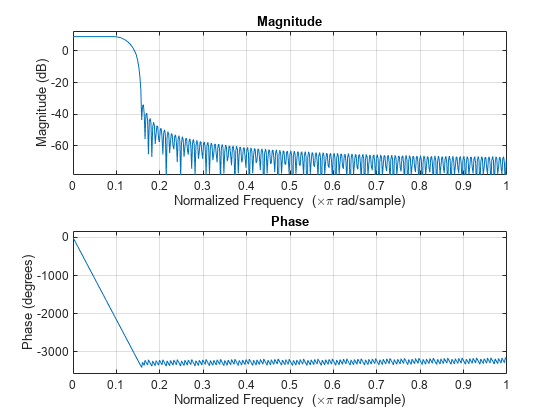freqz
Frequency response of discrete-time filter
Syntax
Description
[
returns the complex frequency response of the specified filter and the corresponding
frequencies at filtresp,w]
= freqz(rcfilter,n)n points that are equally spaced around the upper-half
of the unit circle (from 0 to π).
This function uses the transfer function that is associated with the specified filter to calculate the frequency response of the filter with the current coefficient values.
Examples
Input Arguments
Output Arguments
Tips
Several ways exist for analyzing the frequency response of filters. The
freqzfunction accounts for quantization effects in the filter coefficients but does not account for quantization effects in filtering arithmetic. To account for the quantization effects in filtering arithmetic, see thenoisepsdfunction.For faster computations (performed using FFTs), specify
n, the number of points over which the function computes the frequency response, as a power of two.
Algorithms
The freqz function calculates the frequency response for a filter
from the filter transfer function Hq(z). The
complex-valued frequency response is calculated by evaluating
Hq(ejω)
at discrete values of w. The input
argument n specifies the
number of equally-spaced points around the upper-half of the unit circle at which the function
evaluates the frequency response.
When you do not specify scalar sampling frequency
fsas an input argument, the frequency ranges from 0 to π radians per sample.When you specify scalar sampling frequency
fsas an input argument tofreqz, the frequency ranges from 0 tofs/2 Hz. For more information aboutfs, see thefreqzfunction.
Version History
Introduced in R2013b
